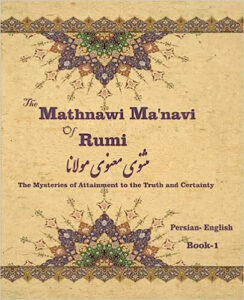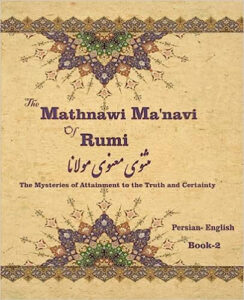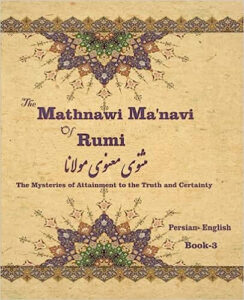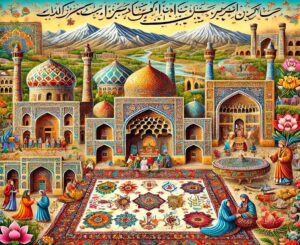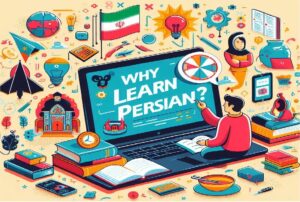Table of Contents
ToggleIntroduction
Jalal al-Din Muhammad Rumi, commonly known as Rumi, is one of the most influential poets and spiritual teachers in Islamic culture. His magnum opus, the Masnavi, is a monumental work of Persian literature, consisting of six books that weave together stories, teachings, and philosophical insights. The Masnavi is not just a collection of poetry; it is a spiritual guide that uses storytelling as a powerful tool to convey profound truths. This article explores the impact of storytelling in the Masnavi and how Rumi uses narratives to communicate complex spiritual and ethical concepts.

The Role of Storytelling in the Masnavi
The primary purpose of the Masnavi is didactic; it aims to educate and guide its readers on a spiritual journey. Rumi employs storytelling to make abstract spiritual teachings more accessible and relatable. By grounding his lessons in stories, he offers practical examples of moral dilemmas, human weaknesses, and the path to spiritual enlightenment.
Allegory and Symbolism
Rumi’s stories are rich in allegory and symbolism, allowing for multiple layers of interpretation. These stories often feature characters and situations that symbolize broader moral and spiritual lessons. For example, the tale of “The Elephant in the Dark” illustrates how limited human perception can lead to misunderstandings and misinterpretations of reality.
- Example: The Elephant in the Dark
In this story, a group of people encounters an elephant in a dark room. Each person touches a different part of the elephant and describes it differently, leading to a fragmented understanding of the whole. This tale serves as an allegory for the limitations of human perception and the importance of spiritual enlightenment to see the whole truth.
Engaging the Reader
Storytelling in the Masnavi is a means to captivate the reader’s attention and make the teachings more memorable. Rumi’s use of engaging narratives, vivid imagery, and dramatic tension helps to keep the reader invested in the spiritual lessons being conveyed. The stories often contain elements of humor, drama, and surprise, making them entertaining as well as enlightening.
Ethical and Moral Lessons
Many of the stories in the Masnavi deal with ethical and moral dilemmas, providing practical lessons on how to navigate life’s challenges. Rumi uses characters and plotlines to explore themes such as justice, compassion, humility, and the consequences of human actions. These narratives serve as a moral compass, guiding readers toward righteous behavior and spiritual growth.
Impact of Storytelling on Understanding Spiritual Concepts
Simplifying Complex Ideas
One of the strengths of storytelling in the Masnavi is its ability to simplify complex spiritual and philosophical ideas. Abstract concepts like the nature of God, the soul, and the afterlife are made more comprehensible through relatable stories. This approach helps demystify esoteric teachings and makes them accessible to a broader audience.
Illustrating the Journey of the Soul
The Masnavi frequently uses stories to illustrate the soul’s journey toward God. Through allegorical tales, Rumi depicts the struggles and triumphs of the spiritual seeker. For instance, the story of “The Parrot and the Merchant” reflects the soul’s yearning for liberation from the material world and reunion with the divine.
- Example: The Parrot and the Merchant
In this tale, a merchant keeps a parrot in a cage and, on a trip to India, asks other parrots for advice on what to bring back for his pet. The parrots’ response, which appears to be a form of self-sacrifice, eventually leads to the captive parrot’s freedom. This story symbolizes the soul’s need to transcend worldly attachments and return to its true, divine nature.
Encouraging Reflection and Self-Examination
The narratives in the Masnavi often serve as mirrors, encouraging readers to reflect on their own lives and behaviors. By presenting moral and ethical dilemmas, Rumi prompts his audience to consider their actions and their spiritual state. This reflective quality of storytelling fosters self-awareness and personal growth.
Cultural and Historical Context
The stories in the Masnavi also provide valuable insights into the cultural and historical context of Rumi’s time. They reflect the social, religious, and philosophical milieu of 13th-century Persia. Understanding this context enriches the reader’s appreciation of the Masnavi and its teachings.
Conclusion
The use of storytelling in Rumi’s Masnavi is a masterful technique that enhances the work’s spiritual and didactic impact. Through engaging narratives, rich symbolism, and relatable characters, Rumi communicates profound truths about the human experience and the path to spiritual enlightenment. The stories in the Masnavi continue to resonate with readers today, offering timeless lessons and insights into the nature of existence and the divine. Rumi’s storytelling not only entertains but also educates, guiding readers toward a deeper understanding of themselves and their place in the cosmos.


